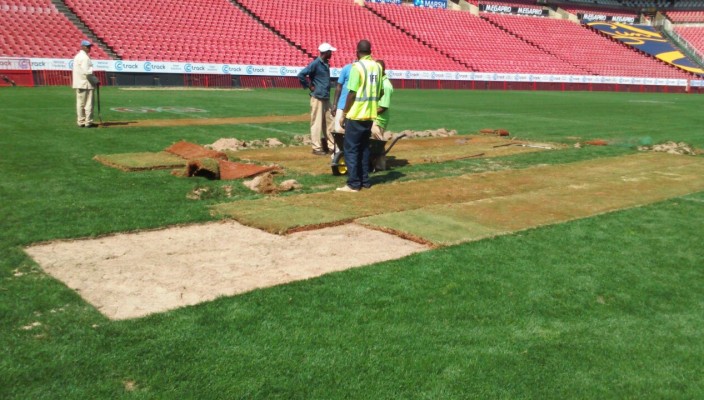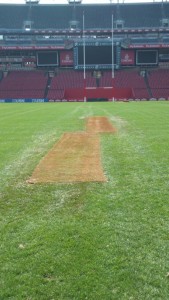Repairs done to Emirates Airline Park pitch
The ‘El Nino’ effect has proven to have an even more devastating effect in its wake in 2016 with weather systems being adversely impacted around the world and also in South Africa where maize output have dropped by 30%.
It has now also directly impacted on the current state of the pitch at Emirates Airline Park which has seen break-up during scrummaging, rucks and malls since the first home Vodacom Super Rugby game against the Cheetahs on 19 March.
El Nino causes a warming in sea surface temperatures in the equatorial Pacific, and can lead to unusually heavy rains in some parts of the world and drought elsewhere.
Background on the pitch at Emirates Airline Park:
This pitch is a sand based growing medium to provide adequate drainage and good playing conditions during wet weather. It was constructed in 1996. The pitch is based on a two grass system where a warm season grass is used in the summer and cool season grass is used in winter to provide a deep root system all year round.
“The El Nino effect has restricted grass growth and poor root establishment at the park,” explains Mike Erasmus, stadium manager.
In the game against the Crusaders two percent of the playing surface was breaking up due to high temperatures in the week leading up to the game. As a result corrective steps had to be taken this week leading up to the Vodacom Super Rugby match against the Stormers on 16 April.
Johan van Vuuren, the pitch expert at Emirates Airline Park and one of the leaders on pitch management in South Africa, headed up the corrective action project.
“This had to be done to ensure the safety of the players and to restrict injuries. We had to take these precautionary measures and while it will take three weeks to recover, the pitch will be ready for all the forthcoming fixtures including the Test in June,” Erasmus concluded.
Related Posts
« Southern Kings Injury Update SA SCORES VICTORY FOR KNOWLEDGE »




















